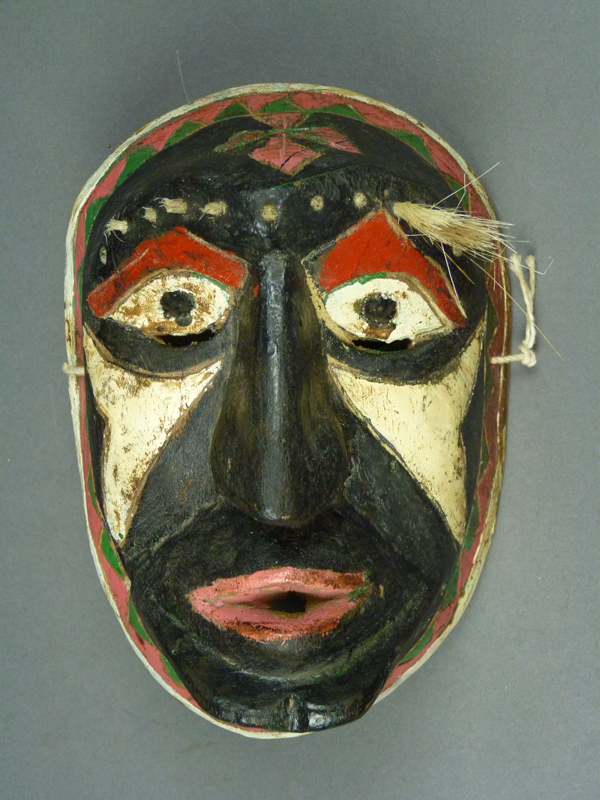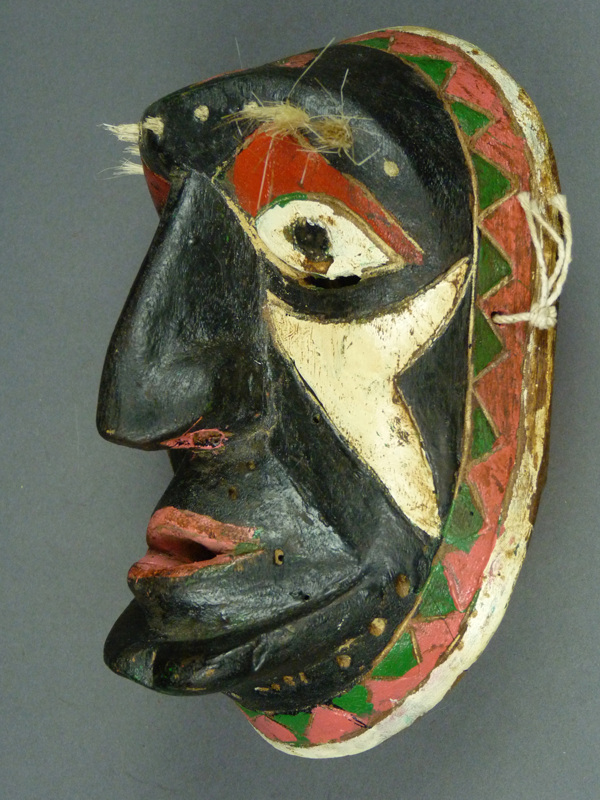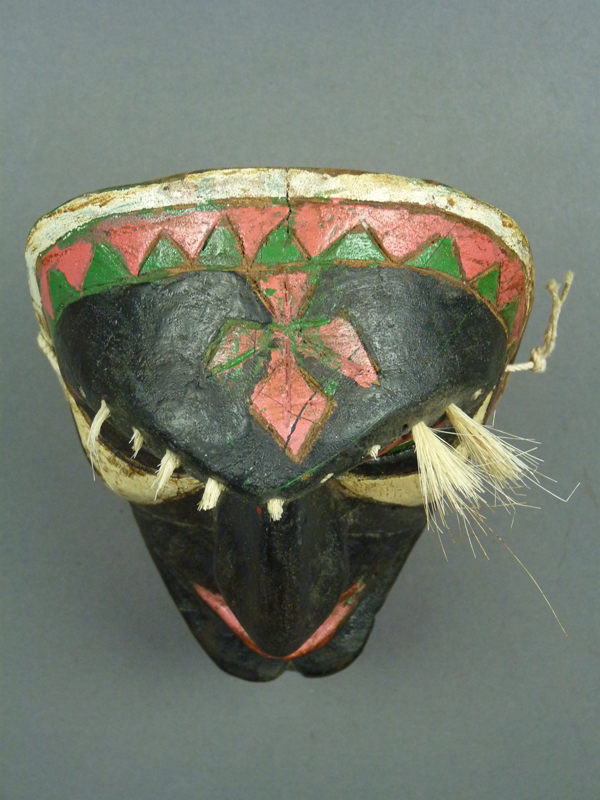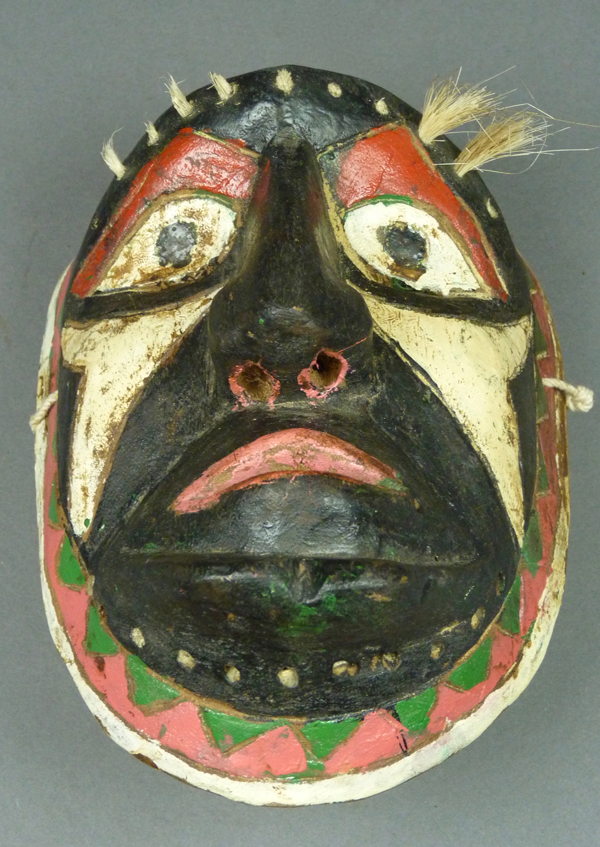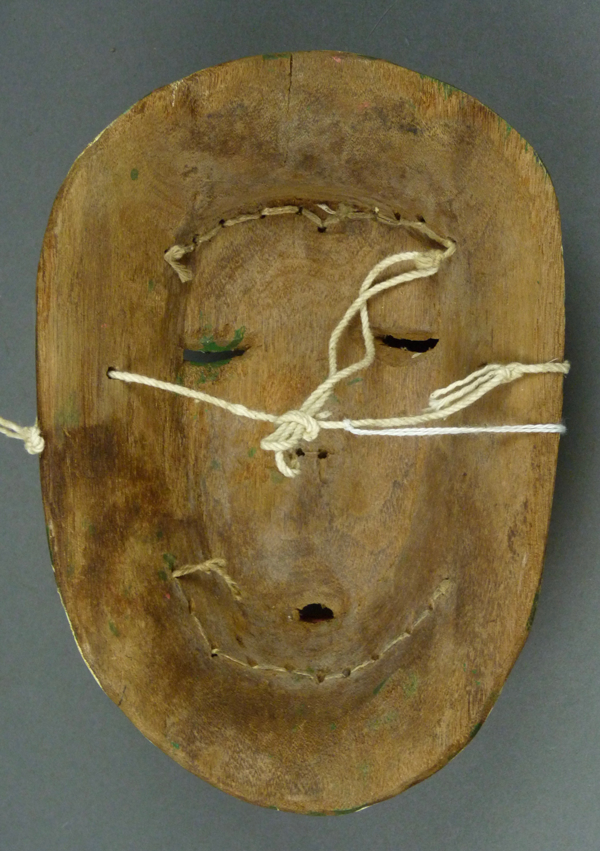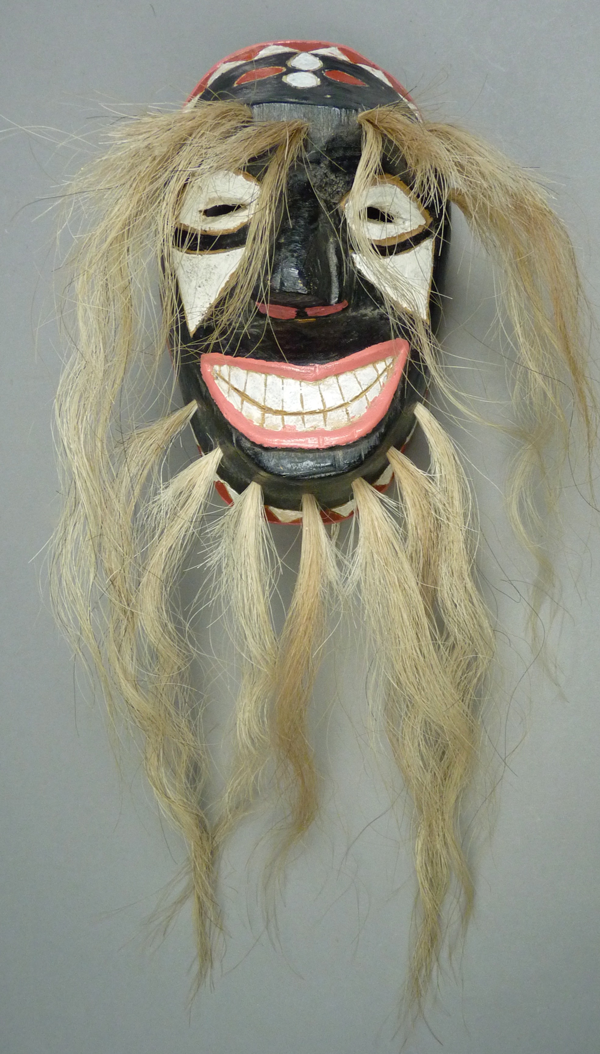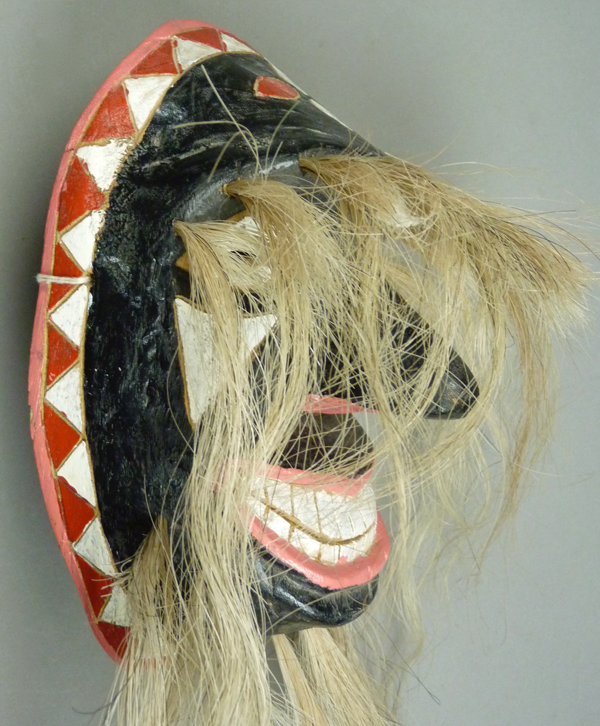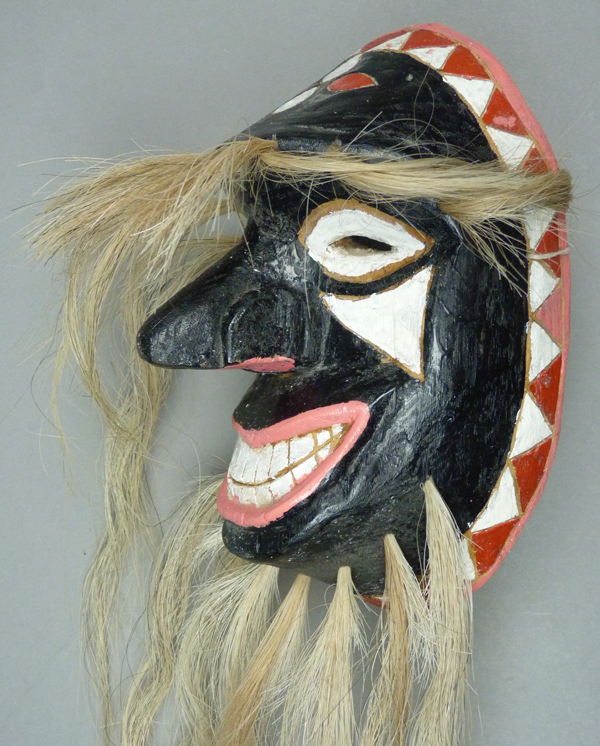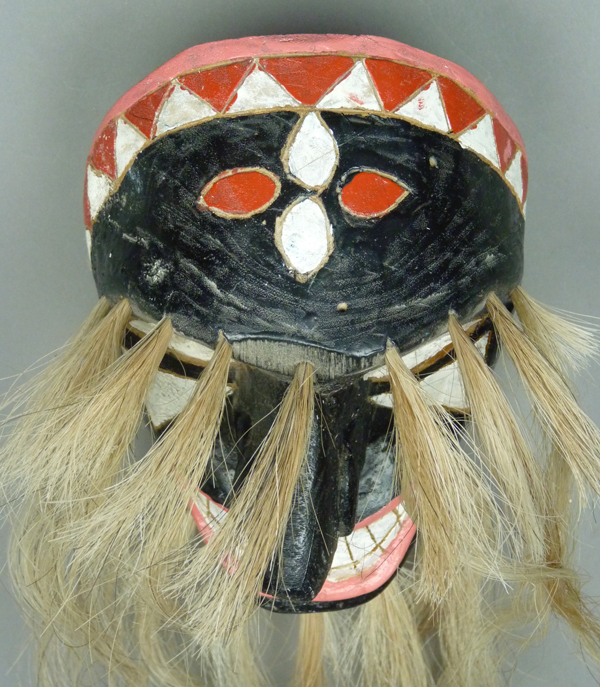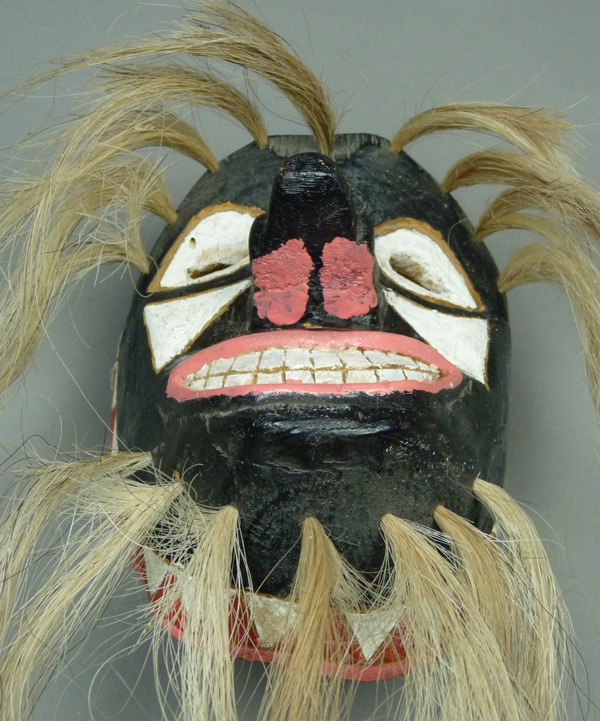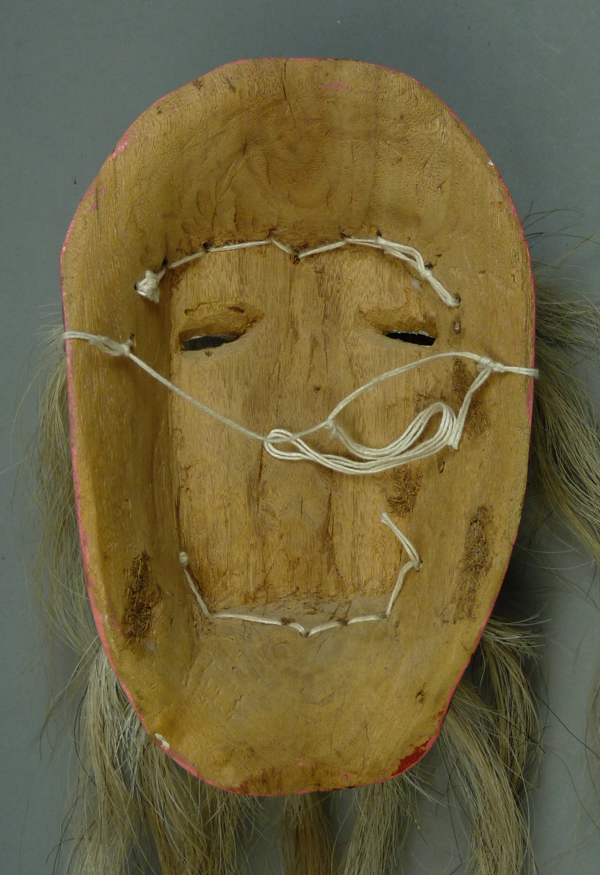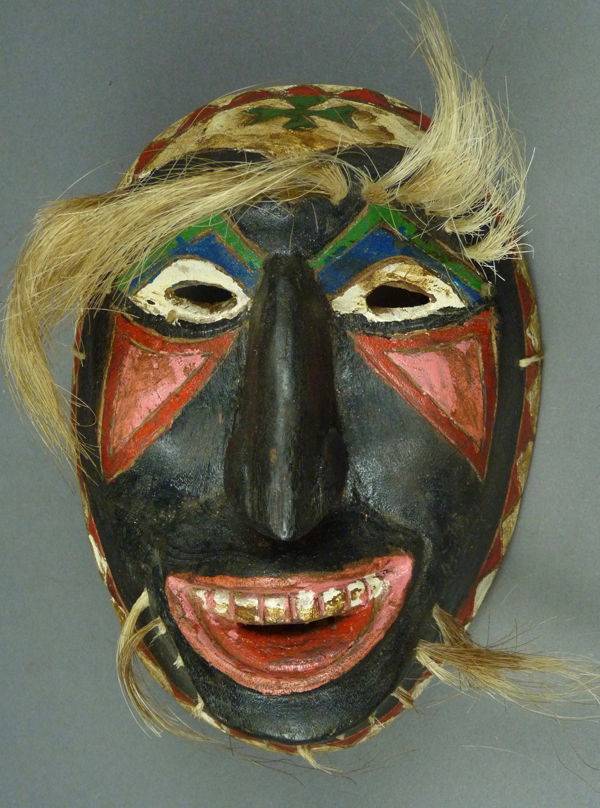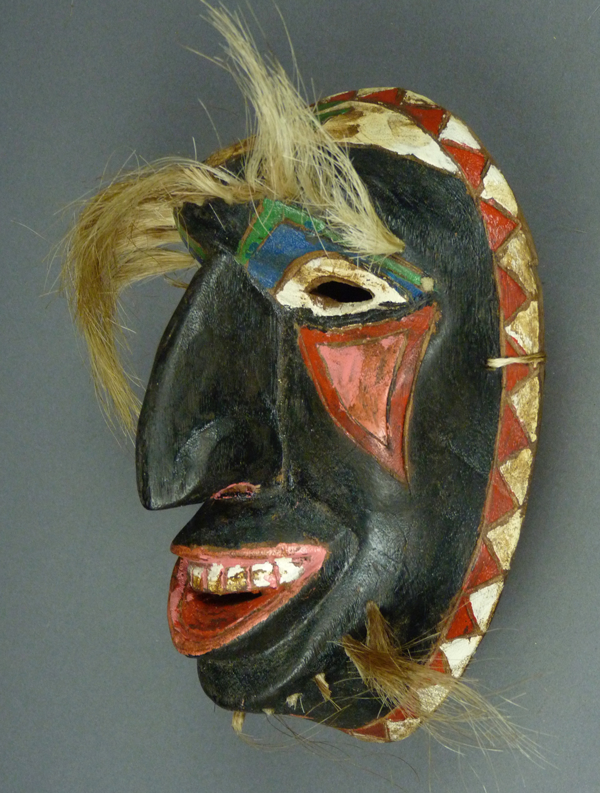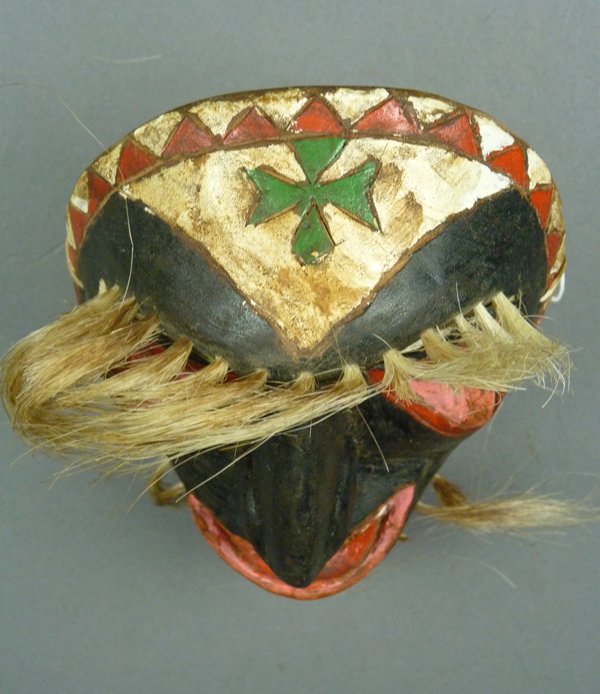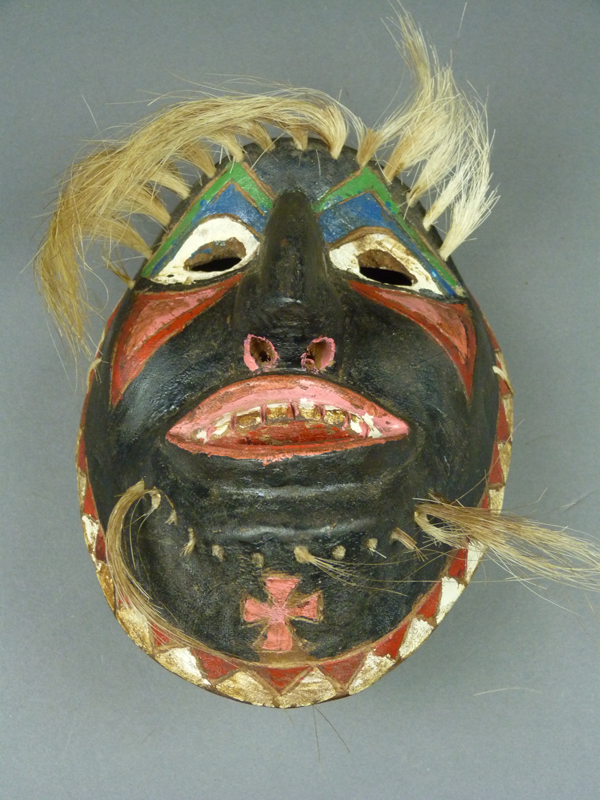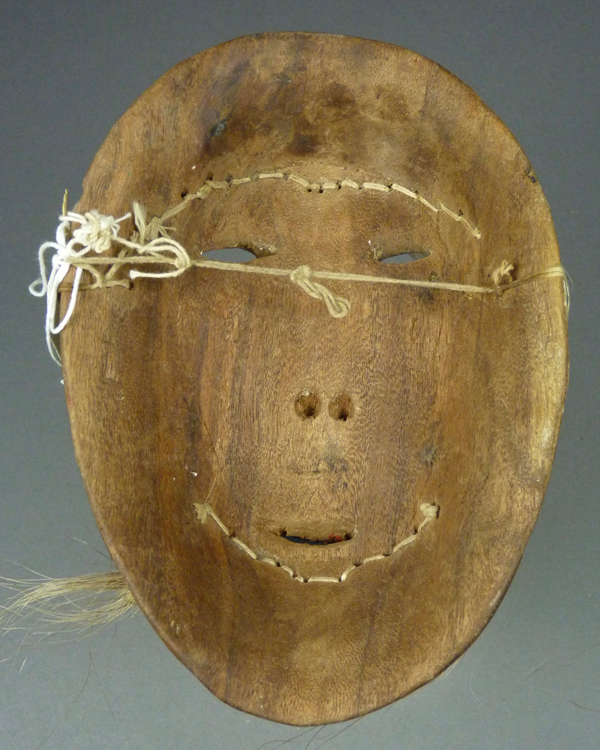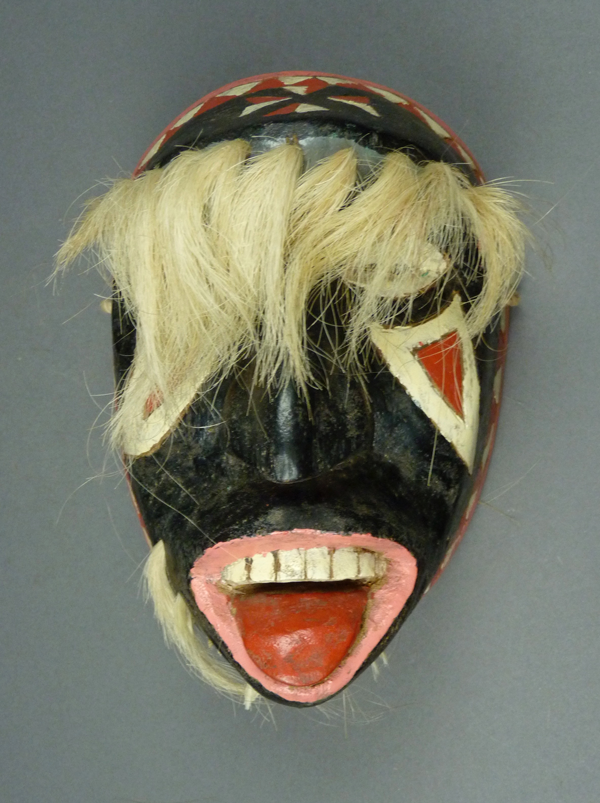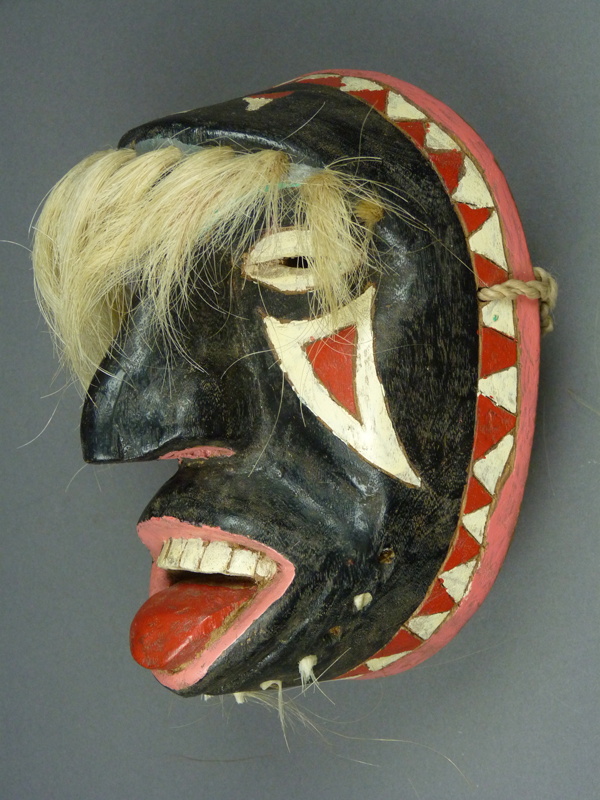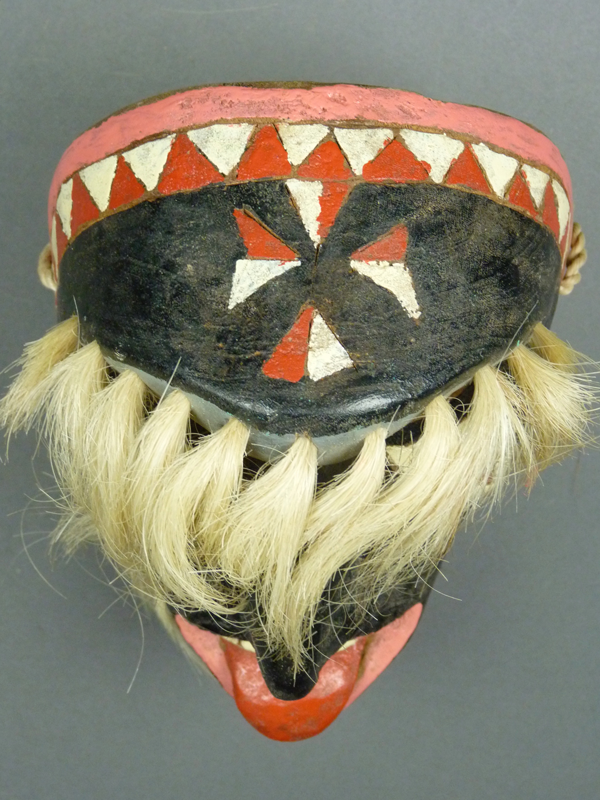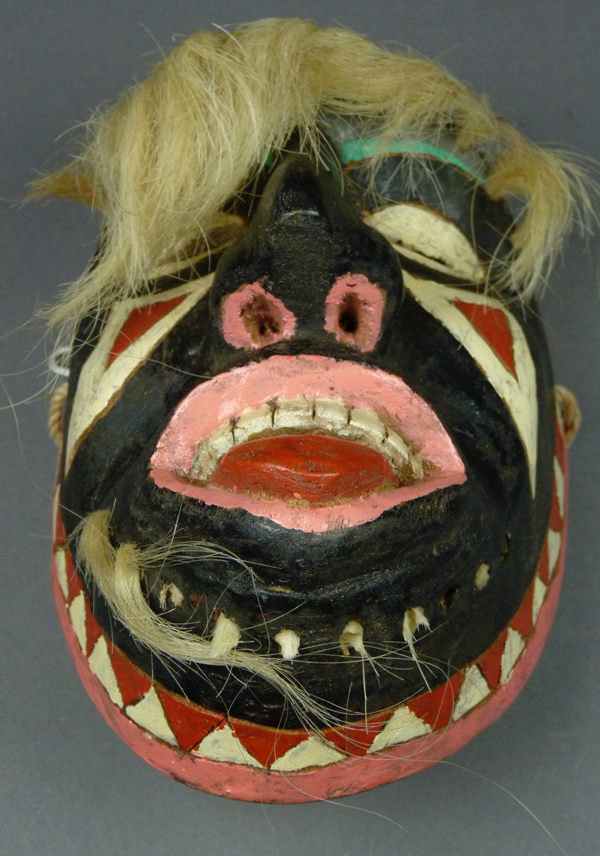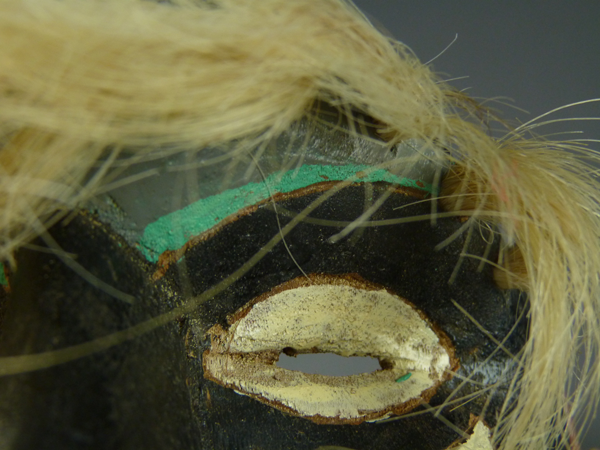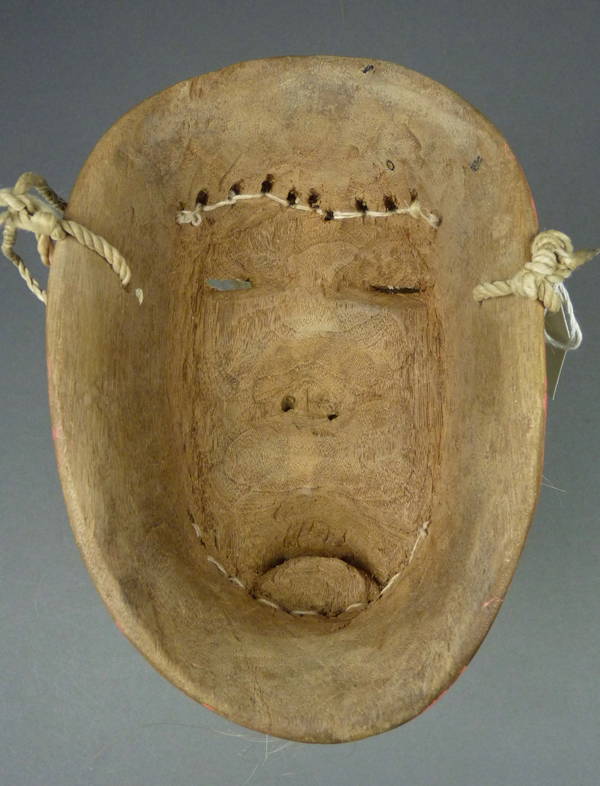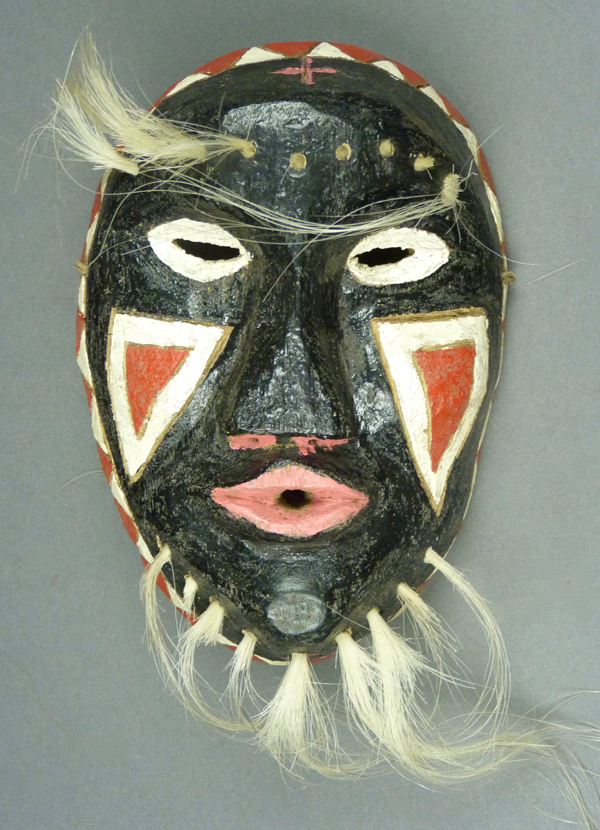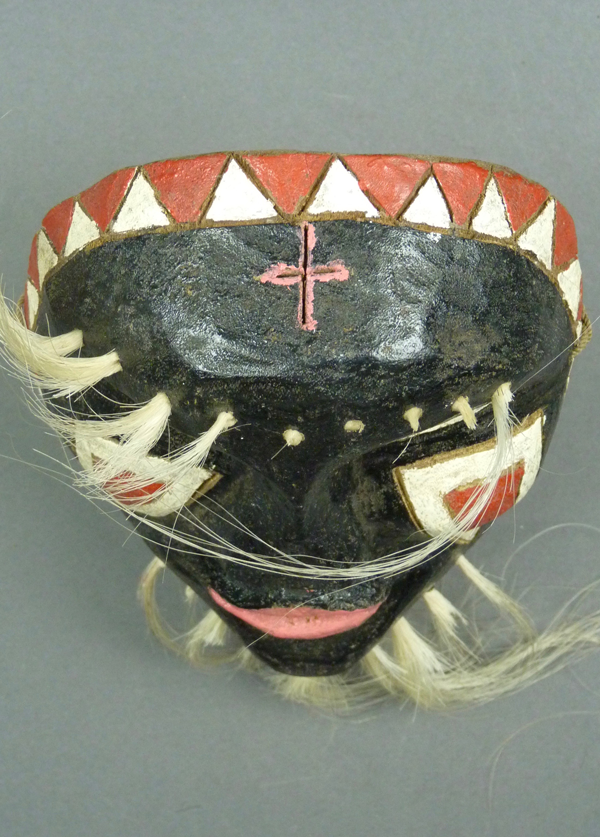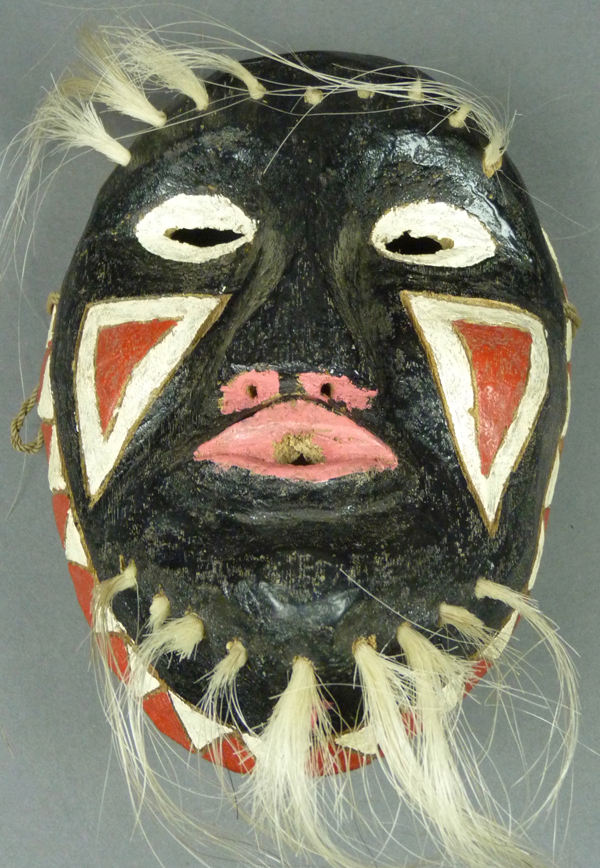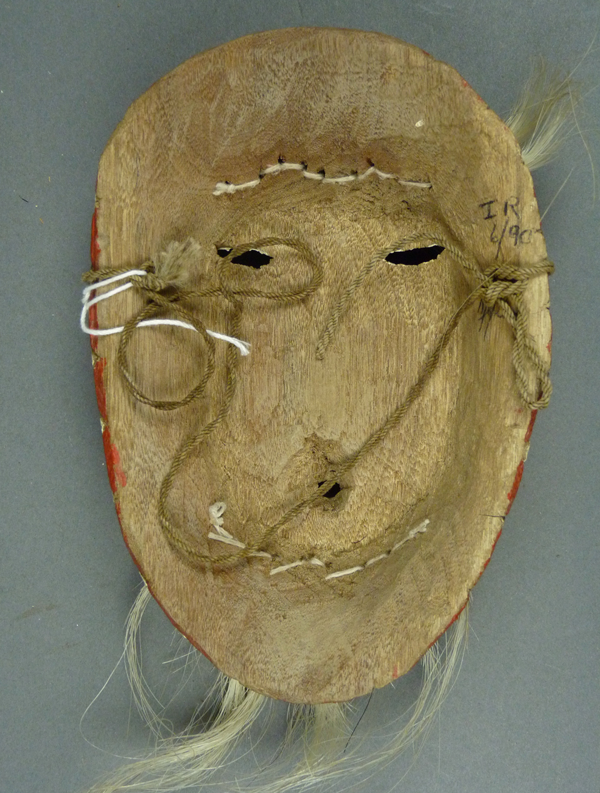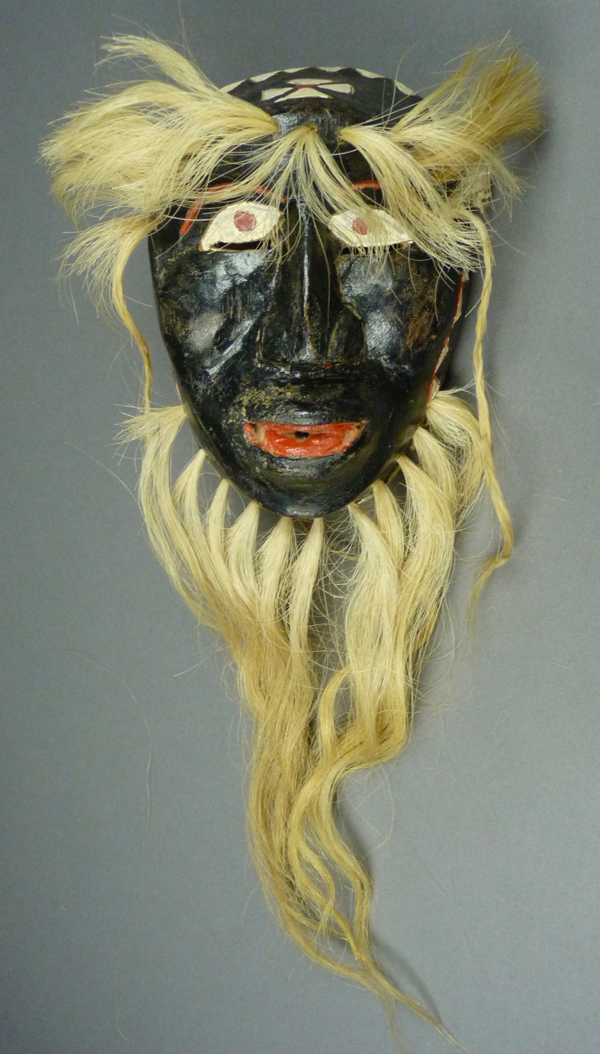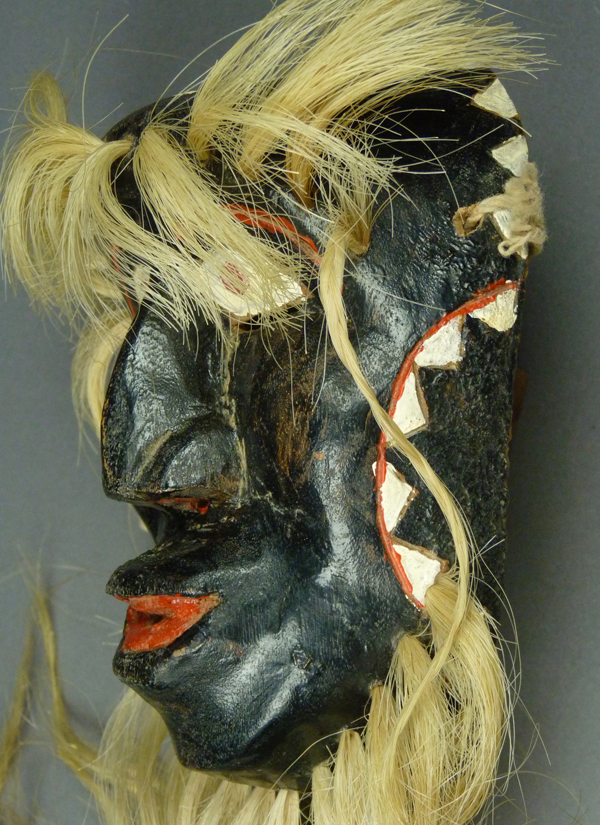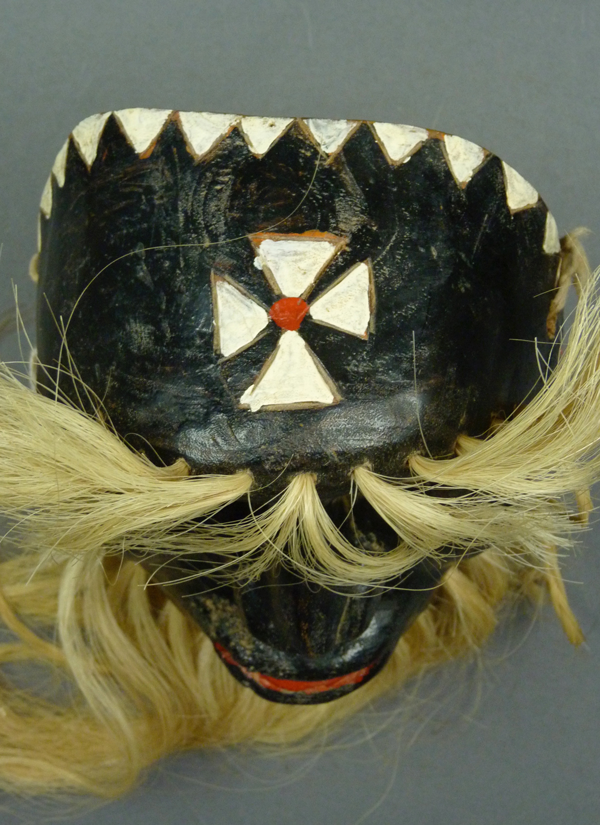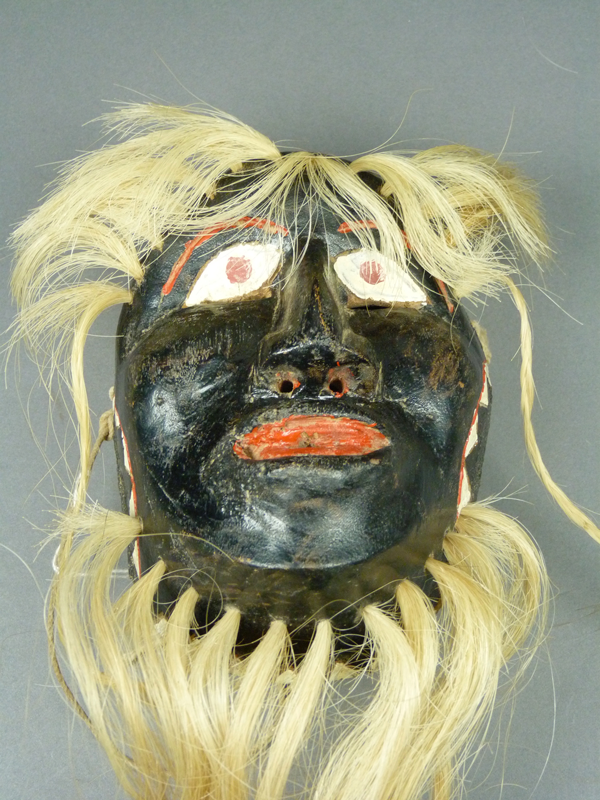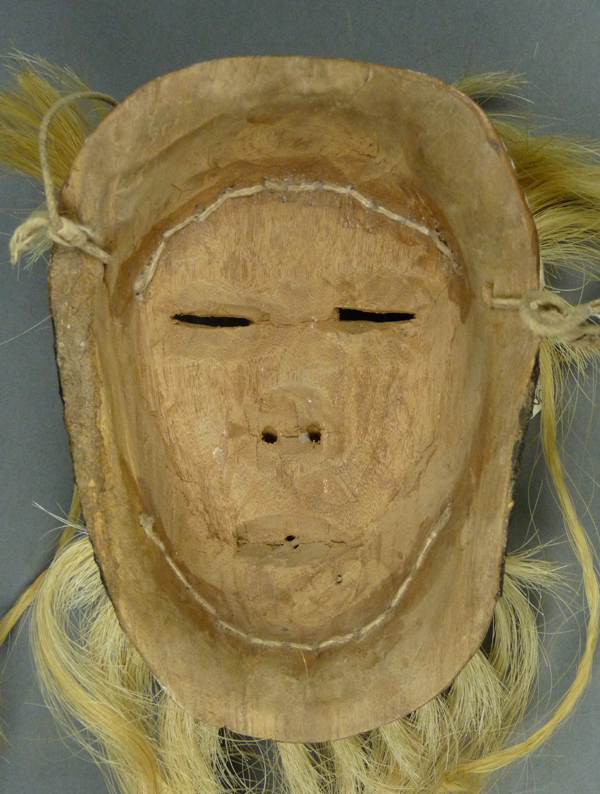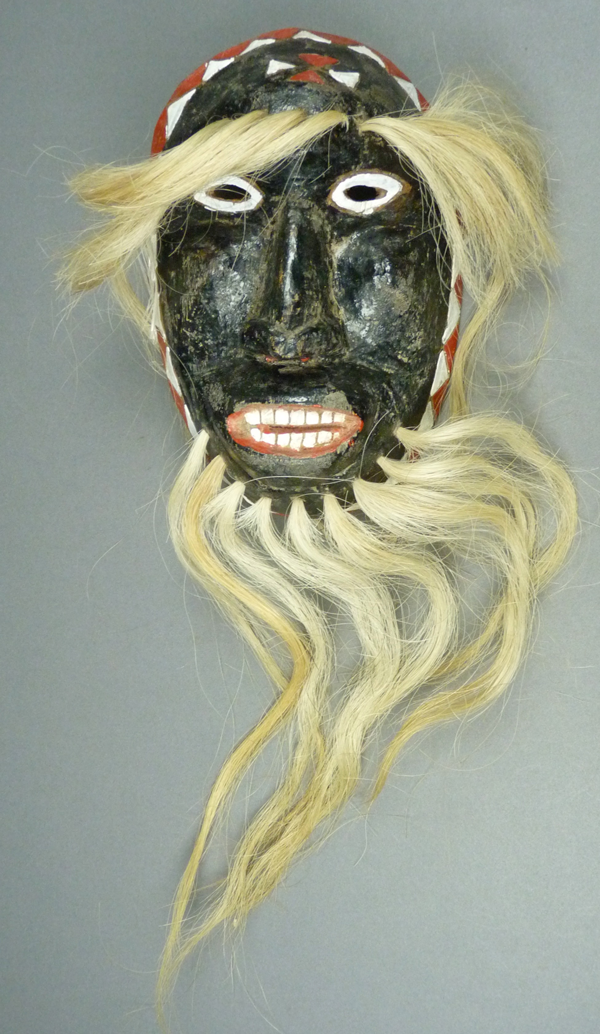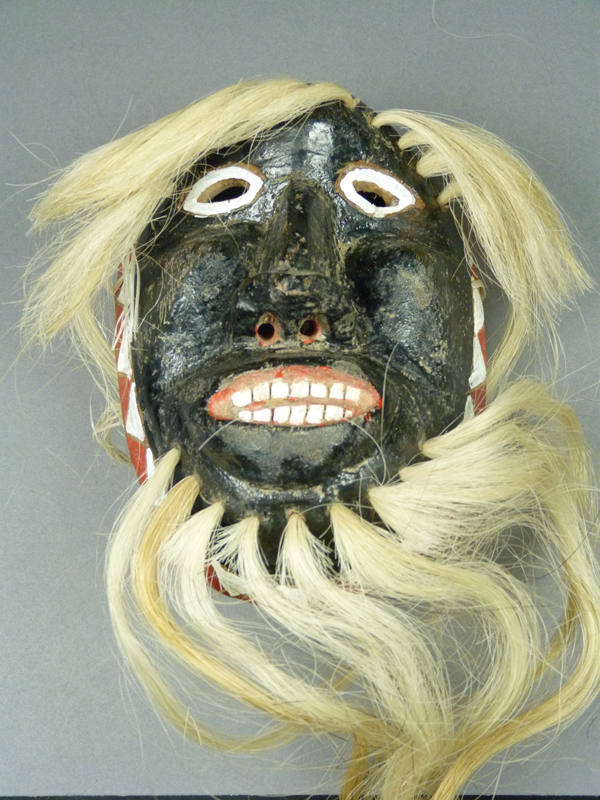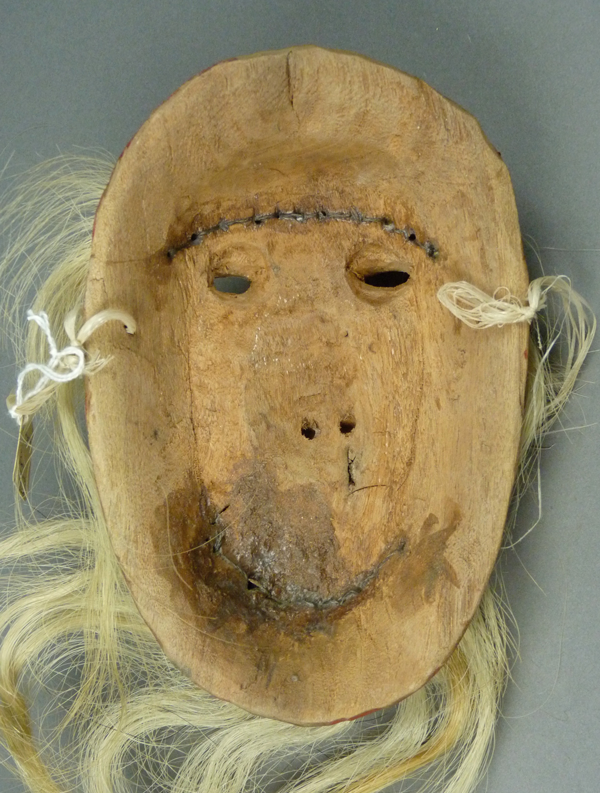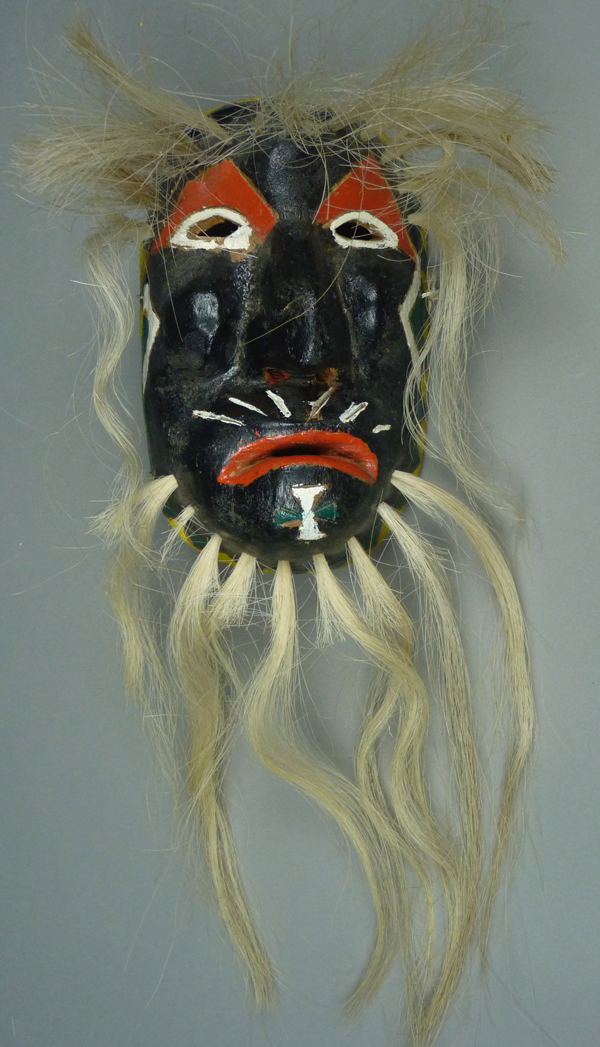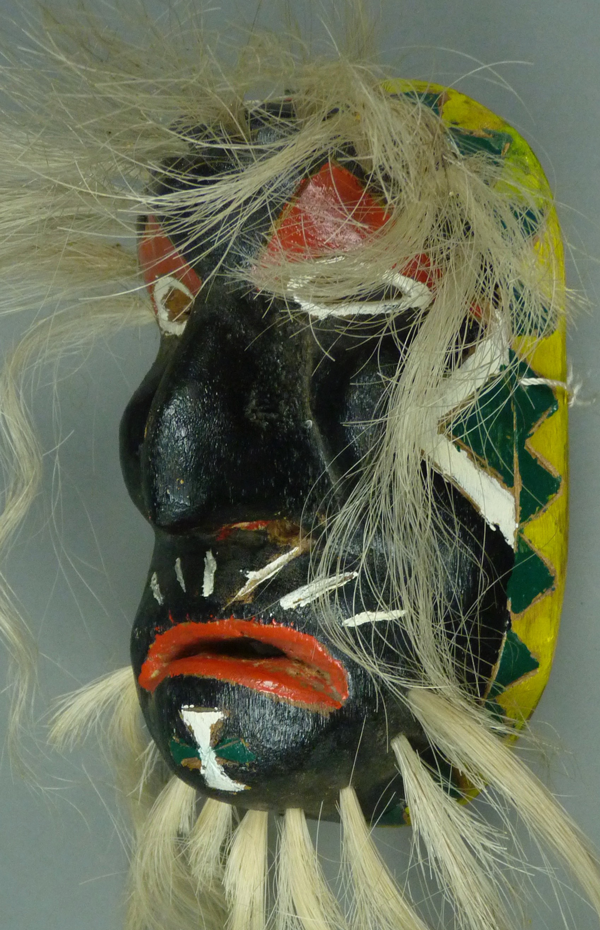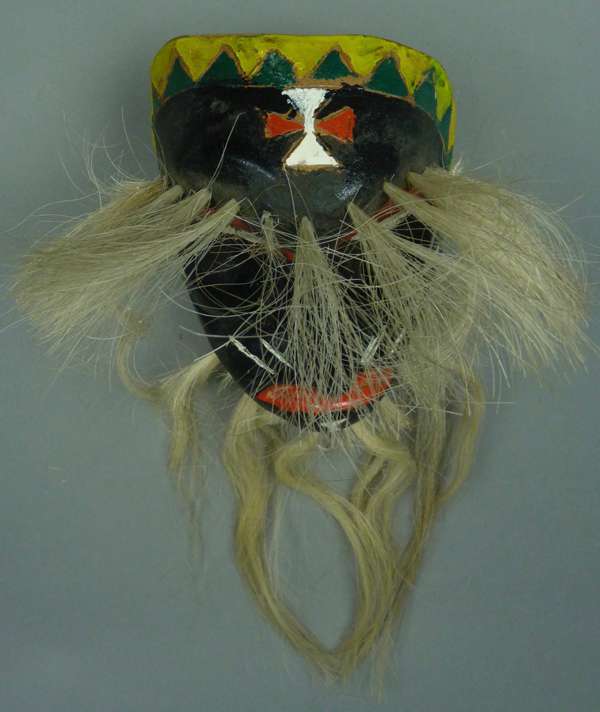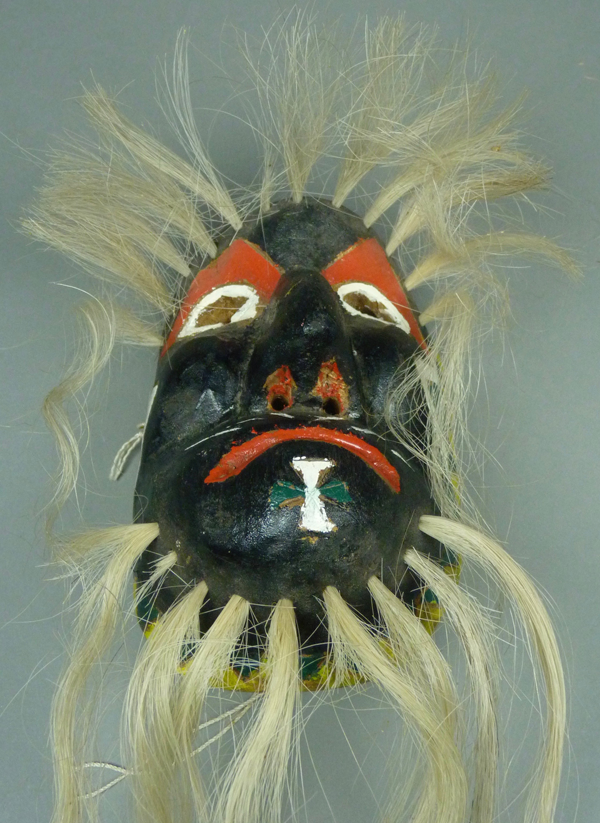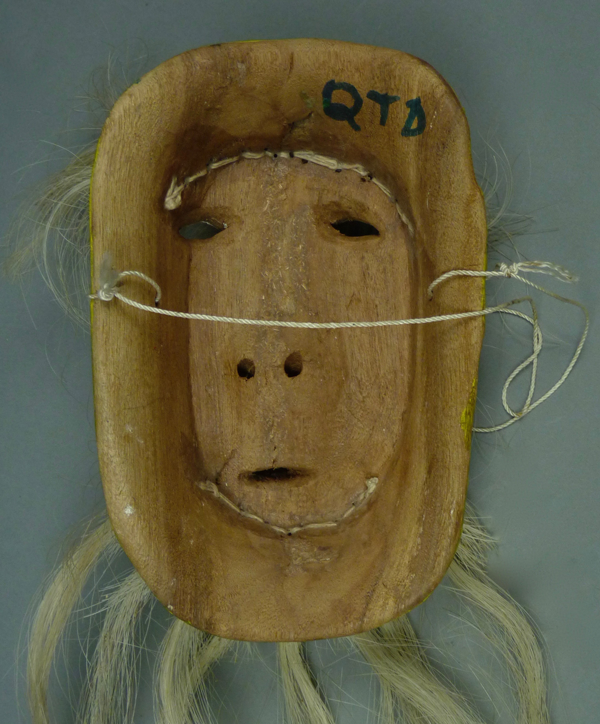Now that I have completed a survey of the masks of Manuel Centella Escalante, I feel compelled to immediately follow with the masks of Inez “Cheto” Álvarez, an equally talented Yaqui master. It took me a long time to appreciate Cheto’s greatness, because at first I only encountered lesser examples of his work. Cheto and Manual Centella had overlapping styles, so that sometimes I was uncertain about which one was the carver. You have already met the son or stepson of Cheto, Camilo Álvarez Buitimea. I will begin with a particularly good Cheto mask from the Barney Burns and Mahina Drees Burns collection. This one was collected in 1988.
In the 1980s Cheto liked vivid colors. In this example the rim design is composed of lime green and hot pink triangles, within the same plain band used by Manuel Centella Escalante and Preciliano Rodríguez Cupis. Instead of the painted triangles over the eyes that were favored by Manuel Centella, Cheto often substituted an L-shaped eyebrow.
The triangles under the eyes are particularly dramatic on this mask, oversized versions of those found on Mayo Pascola masks.
The tiny vision slits are nearly hidden under the eyes. You may have noticed that Pascola masks with vision slits in that location are unusual. In earlier posts I included masks by Manuel Centella, Conrado Rodríguez Cupis, and Preciliano Rodríguez Cupis that had vision openings there; Centella’s were the most dramatic (see 12/26/2016 post). Recall again that all three of those carvers were contemporaries in the town of Potam, Sonora.
The forehead cross has a modern design, with the shape of an abstract angel. Such unusual crosses are frequently found on Cheto’s masks. We saw other unusual cross designs on the masks by the Rodríguez carvers.
There is no chin cross
The quality of the carving is good, although often less refined than that of the Rodríguez carvers. Cheto’s painting tends to be imprecise or even careless.
The back is well carved, carefully smoothed, and characteristic of Chetos masks that were intended for dancing. It is stained from extensive use.
The second mask in this series is one that was made for sale. I purchased it in Tucson Arizona in 1989, at a time when I knew nothing about this carver. Not knowing his name, for several years I referred to the maker of this mask as the “polychrome carver,” due to his love of bright colors. Eventually my friend Tom Kolaz told me that this mask was typical of the work of Inez “Cheto” Álvarez, of Potam Sonora.
The hot pink paint stands out on this mask.
The oversized nose is a nice feature.
This mask has another of Cheto’s invented crosses. One is reminded of the flower petal crosses favored by Rodríguez carvers, but this is Cheto’s version.
There is no chin cross, nor any detailing of the nostrils.
This mask is 7¾ inches tall, 4¾ inches wide, and 4½ inches deep.
The back does not show typical staining from use, but there is an accumulation of dust on the chin after nearly 30 years hanging on a wall. This back demonstrates a feature that one often sees on Cheto’s masks. Apparently he had limited access to suitable wood, so one often finds him using material that is barely large enough, leading to the sides being pinched like this. As you will see, this characteristic (pinched) sometimes serves to confirm Cheto as the probable carver.
More generally, it must be said that Cheto’s made for sale masks do not rise to the standard of his masks that were intended to be danced. His made for sale masks tend to be formulaic in design, undersized, and less precisely carved than those made for dancing. I only realized Cheto’s greatness when I saw the danced masks.
Rather than being formulaic, Cheto’s dance masks (masks made to be danced) appear to have been limited editions. Cheto would apparently get an idea for a new design and then make a few like that. I will illustrate this by comparing the next mask to the first in this post. These appear to be a pair, and they contrast sharply with the 1989 made for sale mask purchased in Tucson. They also look different from another series that follows this next mask.
Here is another mask from the Collection of Barney Burns and Mahina Drees, purchased without any provenance. It is very similar to the first mask in this post.
There are double painted L’s over each eye.
The forehead cross was constucted of four chevron shaped elements, but painted as if the four arms were joined at the center.
Lime green, blue, and pink have all been added to the usual color palette.
This mask does have a chin cross., of four triangles (Centella’s favorite cross design).
The back is nicely carved, and stained from use.
The next mask is obviously by the same hand.
The overlap with the Rodríguez masks is obvious in this case, but the pink paint and the absence of perfectionism point to Cheto. I am not complaining, as I admire the dynamic quality of this mask. Look at this nose!
This invented cross is another Cheto favorite.
There is no chin cross.
A turquoise line above the eyes is only visible from this angle. Above the turqoise there is apparently a gray L.
The detailed view of this eye reveals that Cheto works to a standard of effectiveness rather than perfection.
Here is another worn back. It is sufficiently well carved to be comfortable, and the stained rim indicates significant use.
The next mask is a slightly simpler version of the last.
Here is a very plain forehead cross, but once again in hot pink.
This mask was carved to Cheto’s made for sale standard, but then danced.
In this photo of the back, note again the pinched sides. The wood was barely wide enough, so Cheto adapted to his material.
I don’t know what IR stands for— Inez Rodríguez? This mask was purchased by Barney and Mahina as the work of “Cheto Alvarez Cupes,” a blend of two carving dynasties! There is mild staining from use around the edge.
From the front, this next mask looks similar to the last.
Here is another Cheto mask with small vision slits under the eyes.
The side view shows an unusual variation in the rim design.
Note the crooked shape of this mask, so noticeable from above.
Another forehead cross that has been transformed by the addition of a little paint.
There is no chin cross. Cheto can go either way on that option.
This back has moderate staining from use.
And here is yet another with a similar face. I am illustrating how some carvers have such a characteristic style.
Here is Centella’s favorite cross, but painted by Cheto. Manuel Centella would usually paint all four triangles white.
Cheto’s masks are carved for use, rather than elegance, and they are perfectly satisfactory for this purpose.
The sides of this mask have a slight pinch, but the back is smooth for use.
This mask demonstrates mild staining from use.
In 2014 I found this last mask on EBay™. It had been purchased from the carver in Sonora in the early 1980s, but the carver’s name was not recorded. On the strength of today’s evidence, it will be apparent that this is another mask by Cheto Álvarez, even though it also makes one think of Manuel Centella Escalante.
The L shaped decorations over the eyes are our first hint, and the chin cross painted Cheto’s way (although in Centella’s style) is another.
The non-traditional colors of the rim design also shout Cheto’s name. The chevron designs on the cheeks are unusual, but mirror those Cheto created over the eyes. According to Tom Kolaz, such cheek chevrons are meant to suggest the face painting of Plains Indian warriors; this is an “Apache Pascola.”
The forehead cross is identical in design to the one on the chin.
The quality of the carving also demonstrates Cheto’s hand. It is not refined, but it is effective. The cheeks on this mask are similar to those on the last mask.
This mask is 7¼ inches tall, 4½ inches wide, and 3 inches deep.
This view clinches the case, revealing a Cheto shape with pinched sides. The back is stained from significant use.
Next week we will look at animal Pascola masks by Cheto.

